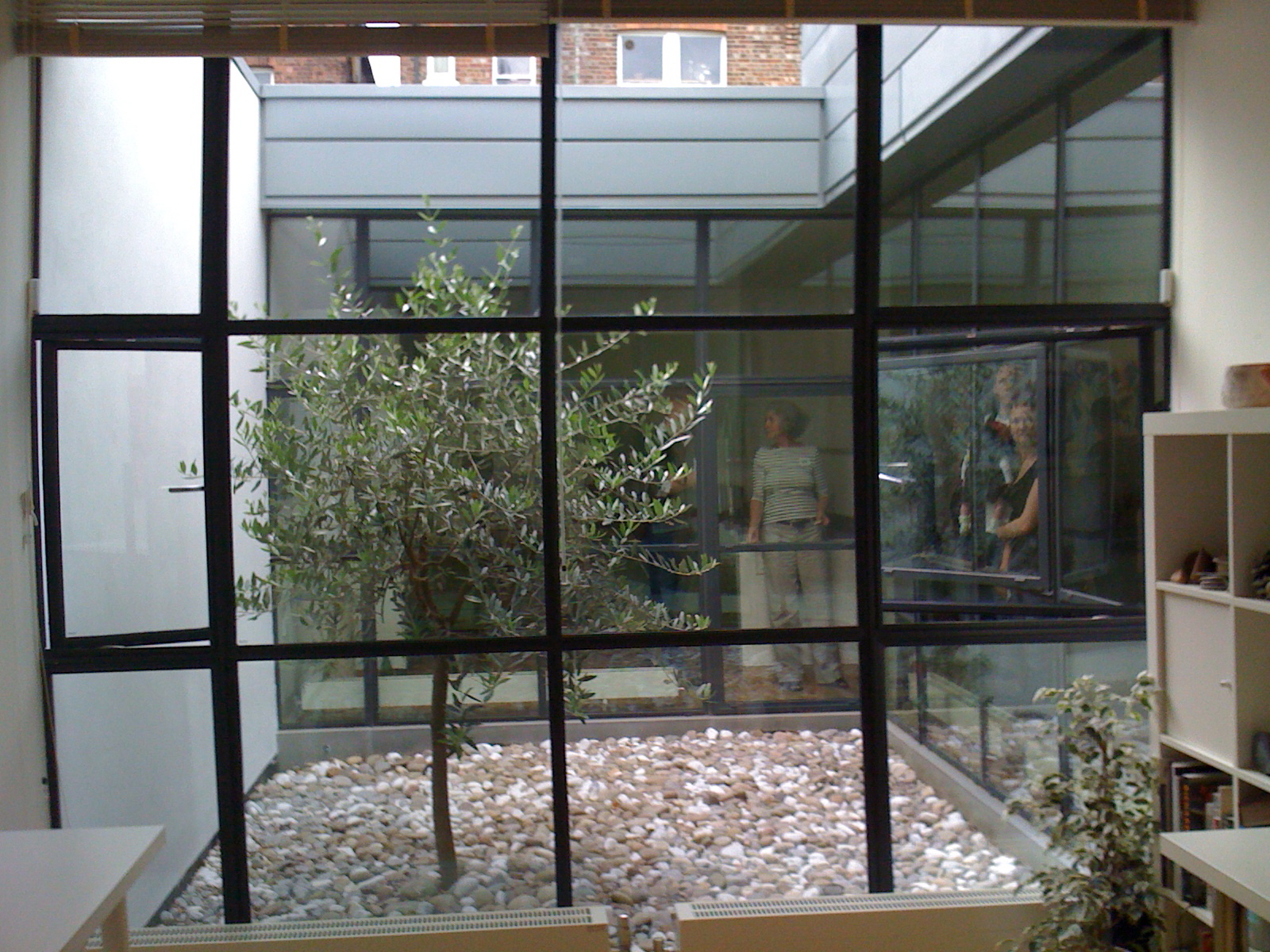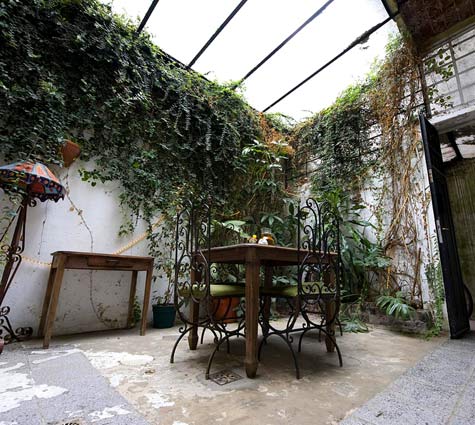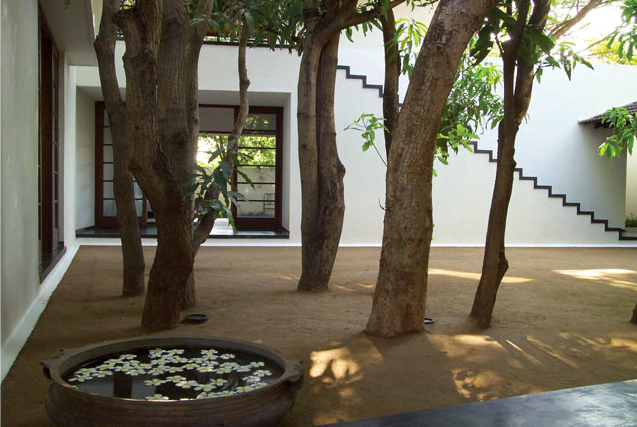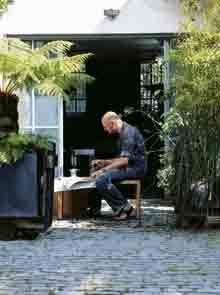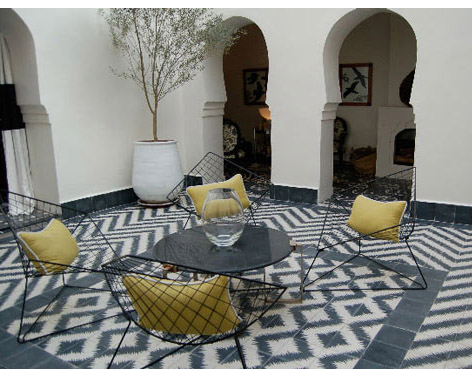 Courtyards are the architectural equivalent of a slow-motion scene in an action movie. As you try busying yourself from one scene to the next they hold you, for what may be a moment that turns into an hour; lengthening time and quieting noise.
Courtyards are the architectural equivalent of a slow-motion scene in an action movie. As you try busying yourself from one scene to the next they hold you, for what may be a moment that turns into an hour; lengthening time and quieting noise.
They can be potent, magical spaces. And perhaps due to the sheltering walls and outside-room atmosphere they can be inviting, social gardens too. Serve tea, play chess; they are village square in miniature. In the day, water is the focal point. At night, perhaps fire.
Courtyards can offer the possibility of the theatrical. Hidden behind traditional solid doors painted bright blue to ward off evil djinn, Maroccan courtyards lurch you from external austerity and dust to sensual delight. Bold colours tone with rough textiles and ‘zillij’ ceramics inlaid like carpet quietened only a little by broad-leaved plants, simple wooden furniture and dark shadows.
Italianate courtyards, with their mannered symmetry and strong planting, offer a more refined, formal stage on which to perform and be seen. And …
Courtyards are the easiest way of living inside-out. Create a world in miniature, with all the interest and drama you can muster!
What are the essential elements for a courtyard garden?
1. Symmetrical boundaries; whether its the surrounding house walls, free-standing brick or even trellis and climbers, creating regular boundaries is key to encompass the space successfully
2. Water; courtyards rely on the sound and light refractions of water to provide a sense of movement and life.
3. A focus; with formal or Islamic courtyards this can be the geometry of layout usually focusing on a central water feature. A more relaxed space could feature an underlit waterbowl, a wonderful specimen plant, or just a lovely table and chairs lit by overhead lanterns.
4; Scale; big plants, small tiles
see also; Moroccan, Italian, rills, water, materials, fire

